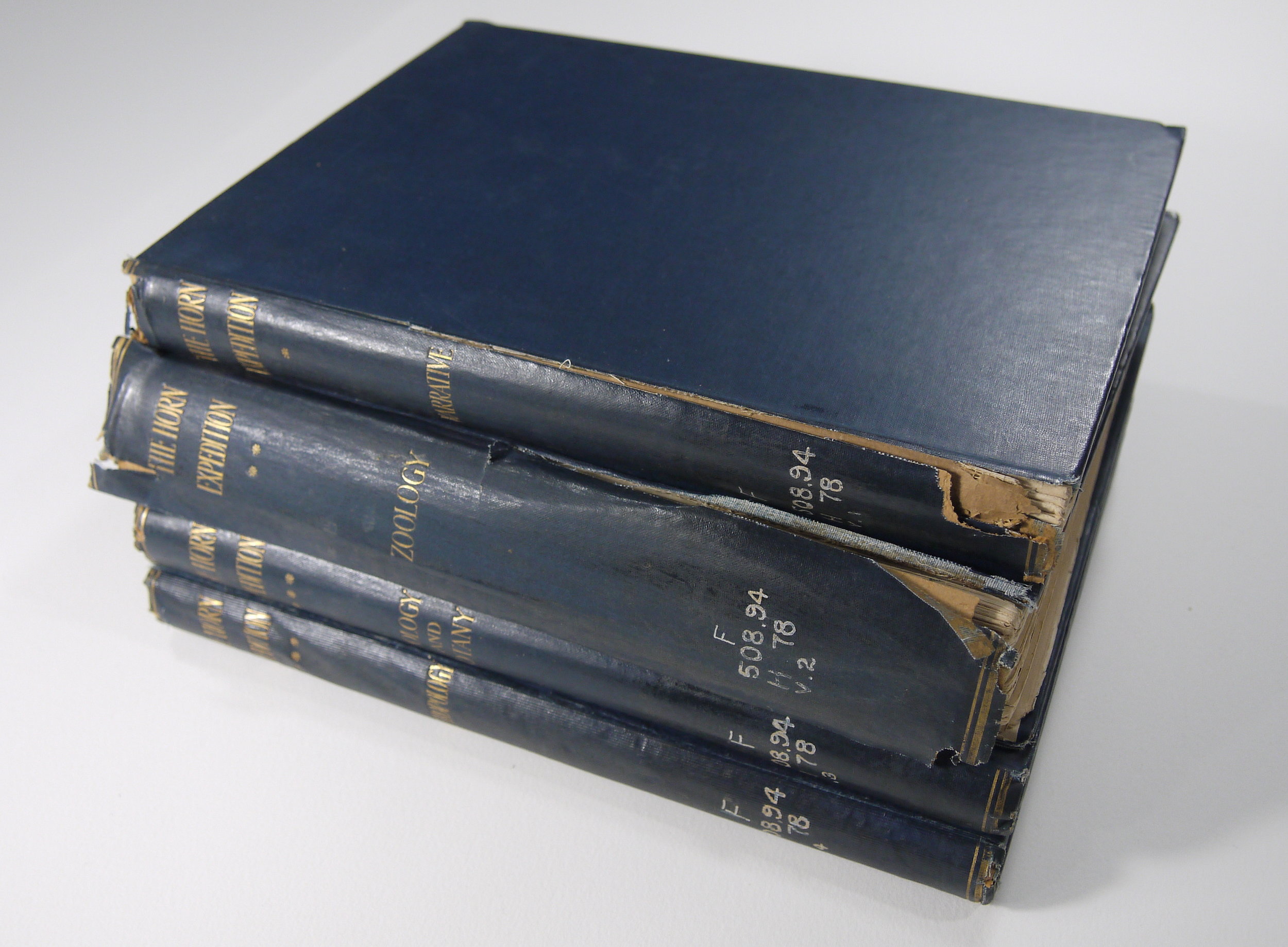The Horn Expedition in disrepair - broken joints and ragged endcaps visible.
The BPCS studio frequently undertakes book repairs and restoration for private book collectors. Poor condition greatly diminishes the value of rare books, as well as rendering them unreadable, and investing in having your antiquarian books restored can increase their value substantially.
The board joints and endcaps of all 4 volumes were particularly damaged.
Volume 2 had many breaks in the sewing of the text block.
This rare four volume set titled The Horn Expedition, published 1896, describes a scientific expedition to Central Australia; it recently came into the studio for conservation. The books had a variety of typical damages, including broken joints and detached boards, a loose text block in volume 2, and damage to the cloth at endcaps and corners. The set was also ex-library with the usual markings on spines and endpapers.
Endcaps of the 4 volumes were chipped and broken.
These issues are common in late 19th century publishers bindings, where the materials have become brittle and handling has caused them to break in tension spots. Fortunately, they are easily repaired.
First, the spines were cleaned to remove the brittle animal glue and then lined with Japanese paper and wheat starch paste. The crumbling acidic spine stiffeners inside the cloth publisher's bindings were removed and replaced with new flexible acid-free card stock.
Removing brittle animal glue and spine lining.
The text block of volume two was resewn on thin linen thread, with Japanese tissue guarding performed on some of pages. Loose boards on three of the volumes were reattached using the Japanese paper spine lining, and the joints were covered with Japanese paper toned to match the blue cloth of the covers.
Board reattachment using Japanese paper spine lining.
Repairing the break at the joint between spine and front board.
Bumped and exposed board corners were repaired with wheat starch paste and toned Japanese paper.
Repairs were made to the cloth of the spines, rebuilding the damaged endcaps with more blue toned Japanese paper. The gold stamped spine decoration missing where the endcaps were damaged was recreated to disguise loss. Finally, the white library call numbers on the spines were removed mechanically. After treatment, the library markings are still faintly visible, which is intentional in order to preserve the provenance of the book, but the set is more attractive after their removal.
The four volumes after conservation treatment.
Headcaps are all repaired.
Board corners repaired.
After treatment, the four volume set is stable and much more attractive. The repaired spines stand straight and clean, the endcaps are smooth and rounded, and the books open easily so the reader can access the text. The restored set is now able to be properly appreciated; with the improved condition, the value is also greatly increased.
Contact us if you have rare or important volumes that could benefit from conservation treatment. There is no charge for an initial consultation, and we are happy to discuss different treatment options to meet your needs. Or, have a look through the portfolio page at other rare books that have been restored at our studio.











